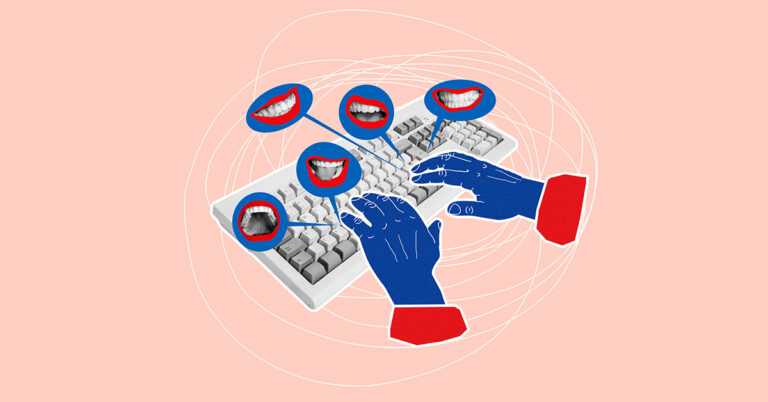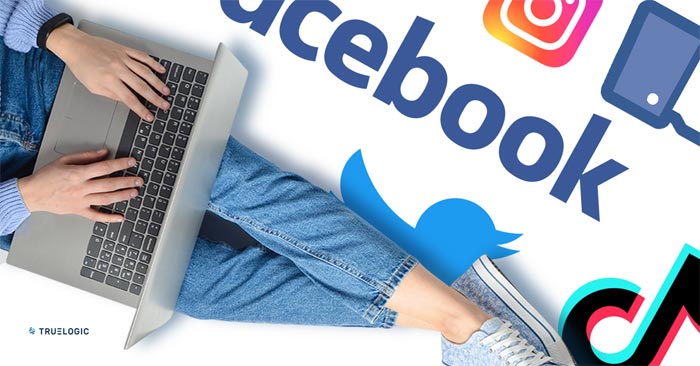Optimizing your Social Media Conversation Channels

Last 2013, BI Intelligence calculated that Social Media is the top internet activity with an average of 37 minutes spent daily. (Source)
And even though 114 billion minutes a month is spent on Facebook alone (even through the decreased reach average), people are spending more and more time on mobile to monitor their streams and conversations.
That’s what really it all boils down to. The conversation between people, family, friends, acquaintances, and even customers.
So how does a brand talk to their customer?
(Photo by DanielCoy, Flickr)Brands always have a hard time using social media as a conversation platform. Business Owners, Upper Management, or Marketing Managers will always stick to a closed-off social media profile or to a conservative campaign for their social media channels.
This rigidity in social public relations – the functionality and design of their channel or their campaign – always results in three scenarios:ia as a conversation platform. Business Owners, Upper Management, or Marketing Managers will always stick to a closed-off social media profile or to a conservative campaign for their social media channels.
- Low visibility in popular social media channels
- Zero to minimal engagement even with middling visibility
- Non-responsive inquiry
One easy way to remedy the second issue is to optimize the conversation. Of course, we’re talking of a specific part in the whole social media marketing process:
- Build your Brand Identity
- Don’t Just Talk; Listen, Analyze, repeat
- Keep the Conversation Going naturally
- Identify Your Target (General Audience and Brand User Ambassadors)
- Write Good Stuff: Content Matters?
We’ll be focusing on Listening, Analyzing, and then optimizing the conversation.
(Photo by Kathleen Conklin, Flickr)
How to orient a brand to social media conversations
A social media conversation is about effectively utilizing your active social media channels and providing a conversation platform through the usage of creative collateral.
Too wordy? Good, that’s one way to make use of content to start a conversation, the professional method that knows what they’re talking about. Though on Social Media, it all depends on the brand identity.
If your business is selling folding bikes on an e-commerce website through drop shipping, then posting content specifically about 20” wheelsets, the new 2015 Dahon models, and even the best method of bringing a folding bike inside a cramped train, is a good conversation starter.
Orienting the brand to a social media conversation is an incredibly basic but thorough process.
The Basic Process
1. Listen – Most of the millions of Tweets, Facebook posts and social conversations that take place each day won’t have a direct implication for your brand. However, a subset of this activity represents social consumers talking about your brand, your products and services, your competitors, or your industry. For brands to be proactive social historians – learning what is being said, when it’s being said, and by whom – a listening plan should be in place that identifies and tracks.
2. Analyze – There are a ton of tools out there that cater specifically to providing a marketer with data for analysis. However, the native analysis dashboards of each social media channel are quick and easy method of determining whether your conversations are working to your advantage or not.
- Google+ Insights
- Facebook Page Analysis
- Twitter Analysis
Their utility lies in giving marketers real time data and giving the timely information when a marketer needs to tweak their conversation methodology.
3. React – this part is where it gets interesting. You should already know what people are talking about (even down to the individual conversations) through listening. You should also have been able to analyze what people are reacting to, what they’re talking about, and everything in between. You now have to be fast, decisive, and creative in crafting your reactions. Responding appropriately is easy when you have the right information at your fingertips.
Goals Orientation
What does the brand want from the conversation? This question pretty much sums up how to orient the campaign goals to fit with the direction of a brands marketing.
Optimizing the Brand’s Social Media Conversations
Since the basic process is predefined, the brands orientation is aligned with the goals. This makes the conversation optimization a reactionary process that provides the marketer guidelines of what to post and how to talk to their audience.
How do you talk to strangers?
A conversation in a café is different from having a conversation through social media channels like Facebook, Twitter, and Google+.
A face to face conversation requires focus, instant decisions, and personal interactions that can’t be felt through a computer. A social media conversation on the other hand, provides people with time, planning, cheat sheets, and a variety of tools for a higher level of experience.
So how do you talk to strangers on the Internet? You Don’t! (Keep yourself safe online folks!)
Marketers talk to people that they already know. A variety of tools are available in providing marketers with data (email, chat, social media profiles, etc). This preparation is the key to making your conversation optimized, and then can make the Audience talk to your brand as an entity.
Making the Audience Talk to You
So you have your info, data, collateral, and a smart strategy. How do you make your audience react to your campaign?
There are a ton of examples of social media campaigns where audiences have reacted positively or negatively. What they all have in common is that the audience has taken to their social media profiles and typed away at their phones/computers to tell the brand what their reaction is to the campaign.
Your brands campaign has the possibility to trigger this same effect. So make a campaign that evokes a specific aspect of the emotional range. Laughter, Nostalgia, and Drama are some of the positive emotions that are commonly used for brand campaigns. Anger, Righteousness, and Contempt has also been used moderately for some. It’s up to your brands orientation and goals to define what emotions are needed to be triggered.









